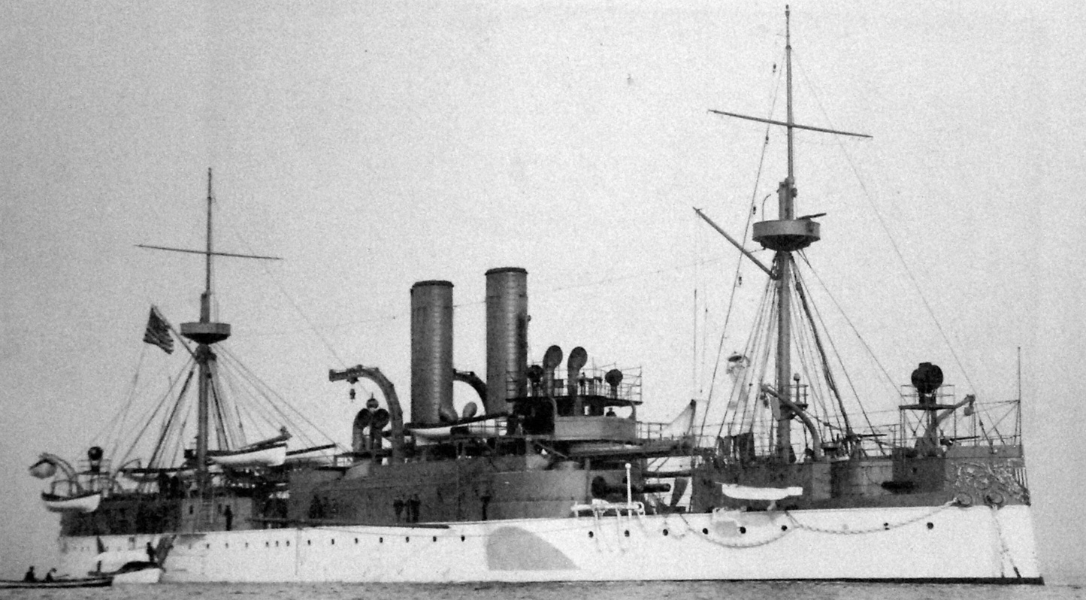On February 15, 1898, the U.S. battleship Maine was torn apart by a massive explosion while anchored in Havana Harbor.
The tragedy claimed the lives of 261 crew members and left the nation reeling.
The infamous cry, “Remember the Maine, to hell with Spain!” echoed across the nation, but the true cause of the explosion continues to elude historians and experts, even 127 years later.
Sinking of the USS Maine
The sinking of the USS Maine in February 1898 came three years into the Cuban struggle for independence from Spain. This began in February 1895 and had a devastating effect on American investments in the Island, valued at over $50 million. Fighting by the insurgents concentrated on the destruction of property and led to the ruination of many sugar mills and sugarcane fields.
In December 1897, riots in Havana led to the deployment of the battleship Maine to the city harbor the following month. This was done as a precaution for the protection of property and the safety of U.S. citizens. It was also a conciliatory gesture to the Spanish authorities.
The ship was built in Brooklyn’s New York Navy Yard, and the keel was laid in October 1888. The ship had a very distinctive design, reflecting changes that had occurred in European navies. It featured two large hydraulically powered turrets each with two 10-inch guns. Initial plans for back-up sails were scrapped as the reliability of steam engines had greatly improved.
The Maine had two engines, together producing 9,000 horsepower. She was capable of traveling 17 knots per hour, or 19.5 land miles per hour.
The ship’s company was composed of 355 men: 26 officers, 290 enlisted sailors, and 39 marines.
At 9:40 p.m. on February 15, a tremendous explosion in the area of the forward magazine tore the battleship apart. It mangled the entire forward part of the ship, splitting her open and she quickly sank.
At this time of the blast, most of the crew were either resting, or already asleep in the enlisted quarters. This area was in the forward part of the ship where the explosion occurred.
There were 261 total fatalities, which included two officers and 251 enlisted men (sailors and marines) who were killed outright by the explosion or drowned.
One officer and seven enlisted men were rescued, but soon died of their injuries.
Only 16 of the 94 survivors were not injured. Injuries included extreme burns, broken bones, and severe concussions.
Since the quarters for the officers were located near the stern (rear) of the ship, the majority survived, including the Captain.
The event came at a time when the American press was exerting pressure and creating public opinion against Spanish control of Cuba. Humanitarian conditions had broken down in Cuba, with many residents being herded into “reconcentration areas” in and around the cities, and thousands died from exposure, disease, and hunger.
The conditions were graphically written about by William Randolph Hearst’s New York Journal and Joseph Pulitzer’s New York World. They trumpeted the cause of the insurgents.
When the Maine exploded, the exact cause of which was unknown, within days of the sinking, the newspapers were blaming Spain with them having utilized a mine. Evidence was misreported or even fabricated, and graphic images were published, shocking readers.
The papers coined the popular phrase “Remember the ‘Maine,’ to hell with Spain!” to whip up sentiment for armed intervention. The Maine would serve as a catalyst, well-exploited by the press, that would ultimately help move the United States into the Spanish-American war.
So, what caused the sinking of Maine? To this day there is no definitive answer.
Initial Inquiry
The 1898 Court of Inquiry questioned survivors and interpreted the reports of divers. The theory that a mine had destroyed the ship stemmed primarily from eyewitness testimony. The report of diver W. H. F. Schluter was particularly significant. He reported that the bottom plates were “all torn ragged and it looked to be inward.” So, the image he portrayed was a plate being blasted from the outside, thus turning inward.
The 1911 Investigation
The U.S. Corps of Engineers, in 1911, built a cofferdam around the remains of the ship, pumped out the water, and exposed the wreckage.
The Board of Inquiry based its analysis on photographs of physical evidence not seen before. Just like the 1898 testimony, they found bottom plates that were bent inward, presumably by a force outside the ship, such as a mine.
The 1976 Book
Admiral Hyman G. Rickover decided to reexamine the issue in 1974. He recruited historians, archivists, and Navy experts on ship design. Their analysis, published in a short book, was summarized as follows by the Admiral, “We found no technical evidence . . . that an external explosion initiated the destruction of the Maine. The available evidence is consistent with an internal explosion alone.”
He continued, “We therefore conclude that an internal source was the cause of the explosion. The most likely source was heat from a fire in a coal bunker adjacent to the 6-inch reserve magazine. However, since there is no way of proving this, other internal causes cannot be eliminated as possibilities.”
National Geographic Study
As the 100th anniversary of the sinking of the Maine approached, National Geographic magazine commissioned an analysis of the disaster based on computer modeling. National Geographic utilized Advanced Marine Enterprises (AME), a marine engineering firm often employed by the U.S. Navy.
The February 1998 issue of National Geographic, published AME’s analysis. They examined both the mine and the coal bunker theories. The report stated that “it appears more probable, than was previously concluded, that a mine caused the inward bent bottom structure and detonation of the magazines.”
It is worth noting that Rickover’s researchers, and even esteemed analysts within AME themselves, did not accept the conclusions of the report.
Despite repeated efforts of experts investigating this highly technical subject, a definitive explanation for the sinking of the Maine is still elusive 127 years after its tragic fate.
Are you enjoying 24/7’s deep dives into recent and not-so-recent history? Would you like to see more stories like this one? If so, reply back to [email protected] and let our Editorial Team hear from you!
For now, keep an eye on your inboxes Thursdays and Saturdays for new editions of “Today in History” from the 24/7 team!
Also, be sure to sign up for 24/7’s Exclusive “Choose the News” Focus Group for your chance to vote on and submit commentary in our Featured Story each week!









